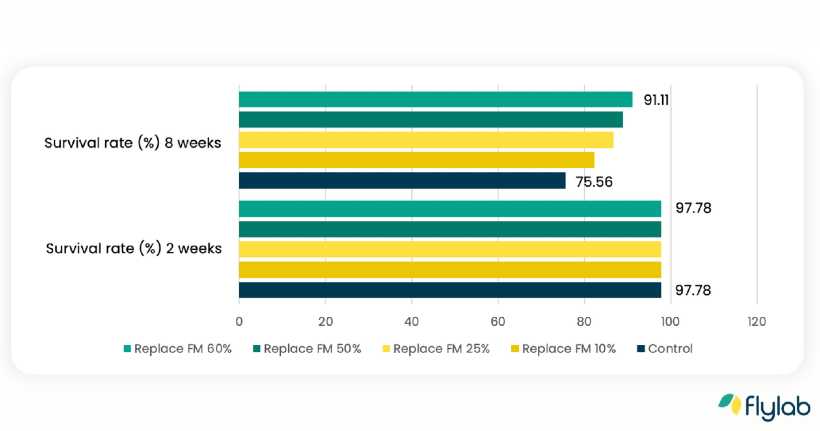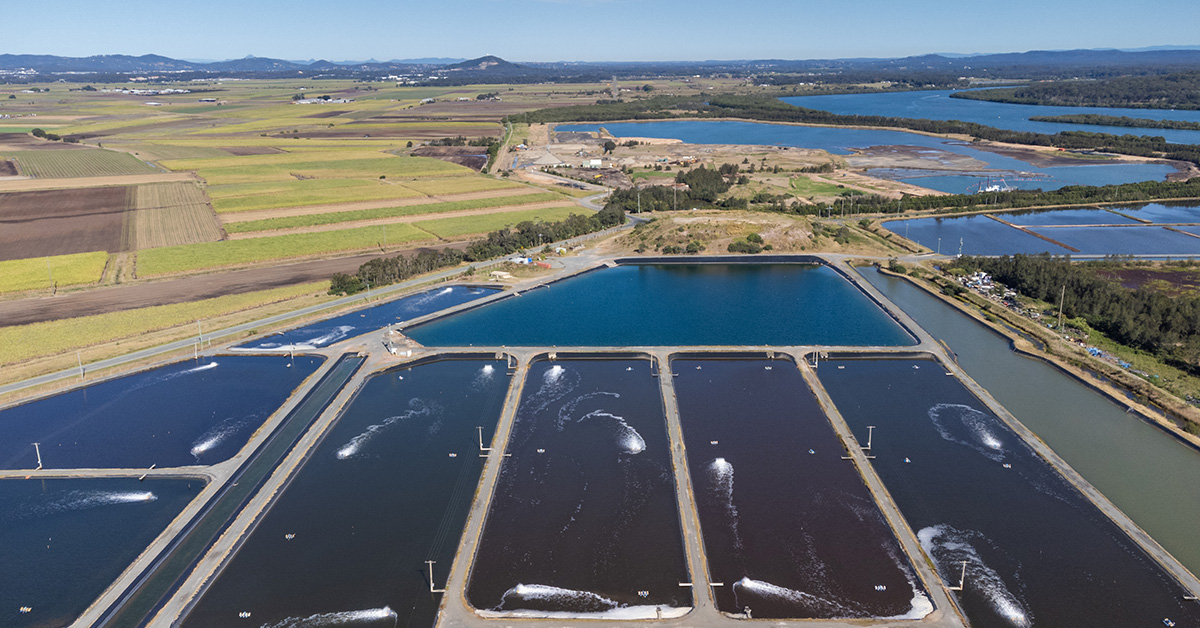Flylab, a leading provider of sustainable aquaculture solutions, in collaboration with Kasetsart University, is pleased to unveil the findings of an insightful study on the impact of FLMeal (black soldier fly larvae meal) on the growth performance of Pacific White Shrimp (Litopenaeus vannamei).
The study focused on assessing the viability of FLMeal as a substitute for fish meal in shrimp diets, aiming to optimize growth potential while addressing the limitations of traditional feed ingredients. The results of this experiment present a significant step forward in sustainable aquaculture practices.
The experiment, led by Dr. Orapint Jintasataporn, employed 15 aquariums filled with saline water, each housing a vibrant community of juvenile Pacific White Shrimp weighing approximately 1-2 grams. The shrimp were fed a meticulously formulated diet incorporating FLMeal, and the study spanned eight weeks to observe growth and development.
The Pacific White Shrimp is the most important farmed penaeid and is widely cultivated in Asia. This study holds particular relevance due to its potential implications for the aquaculture industry in the region and beyond. By replacing fish meal with FLMeal, the research sought to find out how dietary protein levels would be affected by the substitution. Could FLMeal be a viable and accessible alternative to fish meal? The study aimed to answer these questions.
Experimental Conditions
The 15 aquariums, each with a capacity of 240 liters and containing 180 liters of 15 parts per thousand saline water, provided the ideal environment for the experiment. A total of 15 shrimp were introduced into each aquarium, creating a lively and dynamic setting for their growth.
To ensure the shrimp’s health, aeration systems were utilized to maintain a dissolved oxygen level of more than 5 milligrams per liter in a semi-enclosed system. The shrimp were fed a carefully crafted diet incorporating FLMeal, administered three times a day at a dose of 5–8% of their body weight for a period of three weeks under normal conditions. The feed provided to the shrimp contained 36–38% CP (protein) and 6.5–7% fat, ensuring a balanced and nutritious meal plan.
To maintain a pristine environment, a 30% water change was conducted every three days, ensuring the shrimp’s habitat remained clean and inviting throughout the experiment.
Treatment Groups
The study comprised five treatment groups, each with a different composition of feed to evaluate the effects of alternative feed formulations on Pacific White Shrimp growth performance. The treatment groups were as follows:
T1 – Control FM 15%
This group served as the control, using a basal feed formula with a 15% fish meal content. It represented the standard diet commonly used for Pacific White Shrimp.
T2 – BSF-10% of FM (Replace fish meal 10% by FLMeal 1.5%)
In this group, 10% of the fish meal in the control feed was replaced with FLMeal at a concentration of 1.5%. Black Soldier Fly (BSF) larvae-derived meal was used as an alternative source of protein and nutrients.
T3 – BSF-25% of FM (Replace fish meal 25% by FLMeal 3.75%)
This group involved a higher replacement level, with 25% of the fish meal being substituted with FLMeal at a concentration of 3.75%.
T4 – BSF-50% of FM (Replace fish meal 50% by FLMeal 7.5%)
In this treatment group, half of the fish meal (50%) in the control feed was replaced with FLMeal at a concentration of 7.5%.
T5 – BSF-60% of FM (Replace fish meal 60% by FLMeal 9%)
The final treatment group incorporated a significant replacement level, with 60% of the fish meal being substituted by FLMeal at a concentration of 9%.

(Image credit: Flylab)
Improved Growth Performance:
The study revealed that Pacific White Shrimp fed diets containing FLMeal demonstrated higher weight gains compared to the control group. The treatment groups with increasing levels of fish meal substitution exhibited weight gains ranging from 1.33 to 1.57 grams at 2 weeks and 6.96 to 7.98 grams at 8 weeks.
Enhanced Survival Rates:
The treatment groups incorporating FLMeal exhibited improved survival rates compared to the control group. After 8 weeks, the group with 60% fish meal replacement achieved the highest survival rate of 91.11%.
(Image credit: Flylab)
Enhanced Feed Conversion Efficiency:
As fish meal was progressively substituted with FLMeal, the feed conversion ratio (FCR) improved. The group with 60% fish meal replacement achieved the lowest FCR of 1.12, indicating a more efficient conversion of feed into shrimp biomass.
Cooked Shrimp Color Determination:
The study also assessed the color of cooked shrimp, as it can be indicative of shrimp health and influence customer buying decisions. The results showed that the different proportions of fish meal and FLMeal resulted in varying colors for the cooked shrimp.
The study’s findings demonstrate that FLMeal can be effectively used as a sustainable and cost-effective replacement for fish meal in the diets of Pacific White Shrimp. The incorporation of FLMeal not only promotes growth performance, higher survival rates, and improved feed conversion efficiency but also has the potential to reduce costs in shrimp feed production.
Flylab and Kasetsart University’s collaborative study represents a significant step towards more sustainable aquaculture practices. By leveraging alternative feed ingredients such as FLMeal, the aquaculture industry can enhance its environmental footprint while ensuring the long-term viability of shrimp farming.
Learn more about how FlyLab analyzes the impact of FLMeal on on Pacific White Shrimp Growth Performance.



